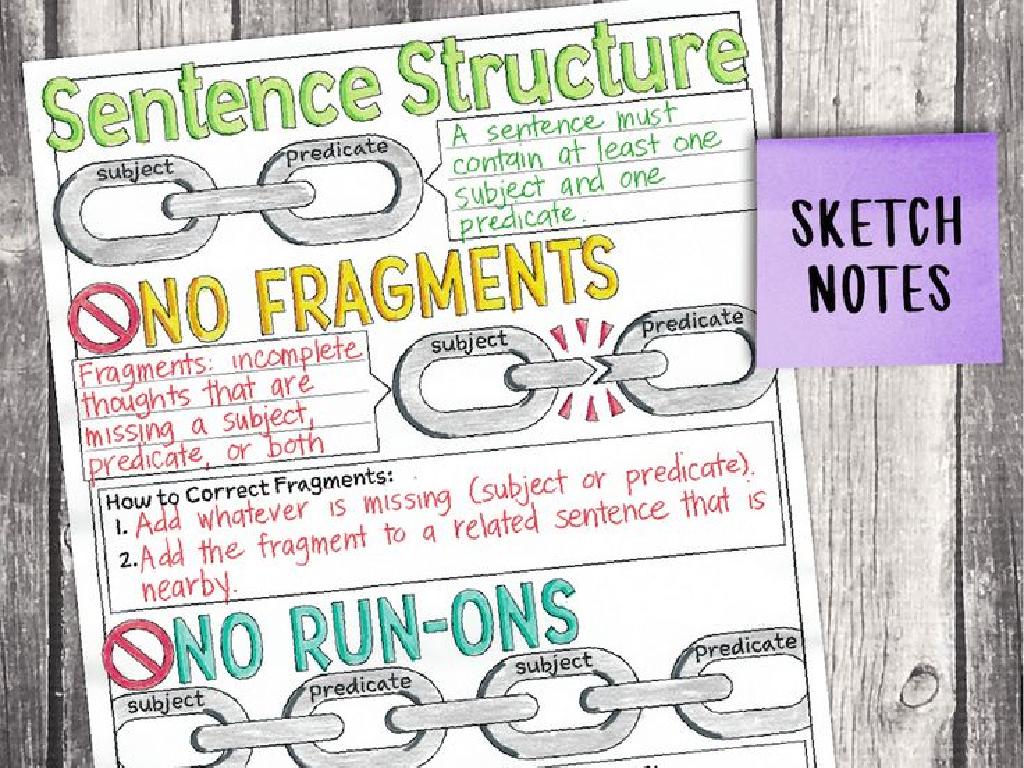Financial Sector
Subject: Economics
Grade: High school
Topic: Ap College Macroeconomics
Please LOG IN to download the presentation. Access is available to registered users only.
View More Content
Introduction to the Financial Sector
– Role of the Financial Sector
– It acts as the backbone of the economy, managing money flow.
– Banks, Markets, and Institutions
– They are the intermediaries for savings, investments, and loans.
– Facilitating Economic Growth
– By channeling funds from savers to borrowers, it fuels business expansion.
– Impact on Everyday Life
– From mortgages to retirement savings, it affects personal finance.
|
This slide introduces the financial sector and its critical role in the economy. It’s essential to explain how the financial sector, including banks, stock markets, and other institutions, serves as intermediaries between savers and borrowers, facilitating the flow of funds and thereby promoting economic growth. Highlight the importance of the financial sector in everyday life, such as through loans for buying homes or saving for the future. Encourage students to think about how the financial sector impacts their own lives and the broader economy. Provide examples like the role of banks in providing loans to businesses for expansion, which leads to job creation and economic development.
Functions of Money in the Economy
– Money as a Medium of Exchange
– Simplifies trade by eliminating the need for barter
– Money as a Unit of Account
– Provides a common measure for valuing goods and services
– Money as a Store of Value
– Retains purchasing power over time for future expenses
– Money as a Standard of Deferred Payment
– Facilitates credit, loans, and financial planning
|
This slide aims to explain the four primary functions of money within an economic system. Money as a medium of exchange means it is widely accepted in exchange for goods and services, thus solving the inefficiencies of barter. As a unit of account, money provides a standard measurement of value that makes economic calculation possible. As a store of value, it allows individuals to save and defer consumption until the future. Lastly, as a standard of deferred payment, money is fundamental in credit transactions, allowing for borrowing and lending. Understanding these functions is crucial for students to grasp how money facilitates economic activity and financial stability. Examples can include using money to buy a coffee (medium of exchange), comparing prices of textbooks (unit of account), saving money in a bank account (store of value), and taking out a loan for college (standard of deferred payment).
Types of Financial Markets
– Money Markets vs. Capital Markets
– Money Markets deal with short-term funds, while Capital Markets handle long-term investments.
– Primary Markets: Initial Sales
– Primary Markets are platforms where new securities are first issued and sold.
– Secondary Markets: Trading Securities
– Secondary Markets involve the buying and selling of existing securities.
– Stock, Bond, and Commodities Markets
– These markets trade in company shares, government or corporate bonds, and physical goods like gold or oil.
|
This slide aims to introduce students to the various types of financial markets and their functions within the economy. Money markets are typically for short-term borrowing and lending, usually for a year or less, while capital markets are for long-term securities that last for more than a year. Primary markets are where securities are created, while secondary markets are where those securities are traded among investors. Stock markets deal with the trade of company shares, bond markets with the trade of debt securities, and commodities markets with raw materials. Understanding these markets is crucial for comprehending how capital is raised and allocated in the economy, which is a fundamental aspect of macroeconomics.
Banks and Financial Intermediaries
– Banks as economic connectors
– Banks match savers’ deposits with borrowers’ loans.
– Credit creation and economic impact
– Banks lend more than they hold in reserves, multiplying money.
– Non-bank intermediaries’ role
– Entities like insurance companies, investment funds, etc.
– Understanding financial ecosystems
|
This slide introduces the concept of financial intermediaries, focusing on the role of banks and non-bank entities in the economy. Banks serve as a bridge between savers, who deposit money, and borrowers, who take out loans. This process is crucial for economic growth as it facilitates the flow of funds within the market. Credit creation by banks, through lending more than their reserves, significantly impacts the economy by increasing the money supply. Non-bank financial intermediaries, such as insurance companies and mutual funds, also play a vital role in providing alternative avenues for investment and risk management. It’s important for students to understand these concepts to grasp how the financial sector supports economic activity. Encourage students to think about how these institutions affect their daily lives and the broader economy.
The Federal Reserve System
– The U.S. Central Bank
– Monetary Policy Explained
– Governs the money supply and interest rates
– Tools of the Federal Reserve
– Open Market Operations, Discount Rate, Reserve Requirements
– Impact on National Economy
– Regulates inflation and economic growth
|
This slide introduces the Federal Reserve System, which serves as the central bank of the United States, a pivotal institution in the American economy. The Fed’s primary role is to manage the nation’s monetary policy by influencing money supply and interest rates. Key tools include Open Market Operations (buying and selling government securities), setting the Discount Rate (interest rate for banks borrowing from the Fed), and determining Reserve Requirements (how much banks must hold in reserve and not lend). These tools are used to control inflation and stimulate economic growth. It’s crucial for students to understand how these mechanisms affect their daily lives, from the interest rates on loans to the overall health of the nation’s economy. Encourage students to follow current Federal Reserve decisions and discuss their impacts.
Interest Rates and Their Economic Impact
– Determination of interest rates
– Central banks set benchmark rates, influenced by economic conditions.
– Interest rates vs. inflation
– High interest rates can lower inflation, while low rates can increase it.
– Impact on saving and borrowing
– Higher rates discourage borrowing and encourage saving; lower rates have the opposite effect.
– Influence on investment decisions
– Interest rates affect return on investments, influencing investor behavior.
|
This slide aims to explain the complex relationship between interest rates and the economy. Interest rates are typically determined by central banks and can fluctuate based on various economic factors, including the need to control inflation. A higher interest rate generally leads to lower inflation, as it increases the cost of borrowing and encourages saving. Conversely, lower interest rates make borrowing cheaper and can stimulate spending and investment but may lead to higher inflation. It’s crucial for students to understand how these rates can influence individual financial decisions and the broader economic environment. Use real-world examples, such as the Federal Reserve’s rate decisions, to illustrate these concepts.
Financial Crises and Regulation
– Causes of financial crises
– Factors include excessive risk-taking, asset bubbles, and lack of regulation.
– Consequences of financial instability
– Economic downturns, job losses, and negative impacts on savings and investments.
– Regulation’s preventive role
– Regulations aim to maintain financial stability and prevent crises through oversight.
– Case Study: 2008 Crisis
– Analysis of the 2008 crisis: subprime mortgage collapse and regulatory failures.
|
This slide provides an overview of the complex factors leading to financial crises and the importance of regulation in maintaining economic stability. Students should understand that financial crises can stem from a variety of sources, including risky financial practices and insufficient regulatory frameworks. The consequences of such crises are far-reaching, affecting not just financial markets but also the general public through economic recession and loss of wealth. Regulation plays a critical role in safeguarding against such instability by enforcing rules and monitoring financial activities. The 2008 financial crisis serves as a pertinent case study to illustrate these points, highlighting the consequences of lax regulation in the housing market and the subsequent global economic impact. Encourage students to discuss the balance between financial innovation and regulatory oversight.
Class Activity: The Stock Market Game
– Form groups for simulation
– Make informed investment choices
– Use financial sector knowledge to buy/sell stocks
– Reflect on the trading experience
– Consider what strategies worked or didn’t
– Discuss the results and learnings
– Share insights and understand market dynamics
|
This interactive class activity is designed to give students a practical understanding of the stock market and the financial sector. Divide the class into small groups and provide each group with a simulated stock market environment where they can apply their knowledge to make investment decisions. Encourage them to consider factors such as market trends, company performance, and economic indicators. After the simulation, lead a discussion where students can reflect on their strategies, what they learned about market fluctuations, and the importance of informed decision-making in investments. Possible activities include tracking real stocks, using an online simulator, role-playing different market scenarios, or creating a portfolio based on hypothetical funds.






